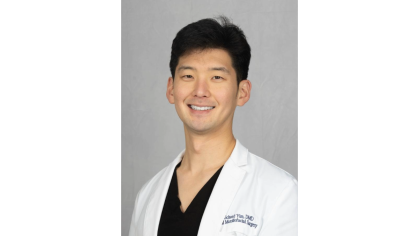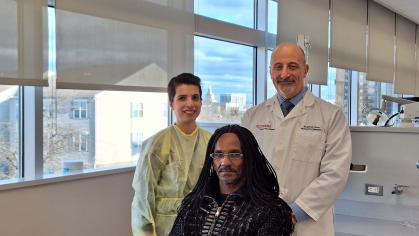RSDM Pain Experts Work Globally to Create New Diagnostic Categories
Because the growing field of orofacial pain is still relatively new, many types of conditions and syndromes are familiar to specialists in the field but not to other practitioners.
Clusters of symptoms aren’t classified, so they go without a name or diagnostic code. It’s one reason why orofacial pain is frequently misdiagnosed and hard to treat.
“There isn’t one unifying classification that’s all-inclusive and broad enough to cover most of the disorders,’’ says Dr. Rafael Benoliel, Director of RSDM’s Center for Orofacial Pain and Temporomandibular Disorders. “If you don’t have classifications, then you don’t have a common language. For instance, if I tell you I have a migraine, anywhere you go, they’ll know what you mean and you can say, ‘I was diagnosed with a migraine.’ Our field doesn’t have that yet.”
For the past few years, Dr. Benoliel and others from RSDM have been meeting with the world’s leading authorities to create a diagnostic lexicon for their field. In August, Dr. Benoliel was named the chair of the Orofacial Pain Special Interest Group of the International Association for the Study of Pain. In September, he and Dr. Gary Heir, Clinical Director of RSDM’s Division of Orofacial Pain, were part of the 16th World Congress on Pain in Japan, where they worked on classification systems. Dr. Benoliel plans to host a follow-up orofacial pain conference at Rutgers this year.
Creating new categories for the International Statistical Classification of Diseases and Related Health Problems (ICD) and the International Headache Society (IHS) requires dialogue with a cross-section of top specialists, from headache experts to psychologists, says Benoliel. “It’s creative as well as scientific, there isn’t always all the information on hand so you need to rely on your own clinical experiences as well as your colleagues. Then you fill in the gaps with literature and other expert opinion.’’
As clinicians, orofacial pain experts like Benoliel and Heir encounter symptoms that range from muscular and joint pain to various types of neuropathy. Some patients suffer from “facial migraines,’’ the same kind of throbbing, pulsating pain caused by migraine headaches.
“But instead of occurring around your head, it occurs either around your cheek or your jaws and teeth,’’ explains Benoliel. “ It can feel like sinusitis or a toothache. It can be of sudden onset that becomes chronic. Often, the headache people haven’t paid attention to orofacial pain and they aren’t quite familiar with existing terminology. By unifying them, a new classification can be created within the existing headache classification.’’
Although Benoliel and his colleagues have made progress, finalizing the classifications doesn’t happen over night. First, a Beta version is used and tested and revisions are made before the process is complete. Benoliel hopes that next year, the committee will be finished and the classifications will be published in the ICD and by the IHS.




